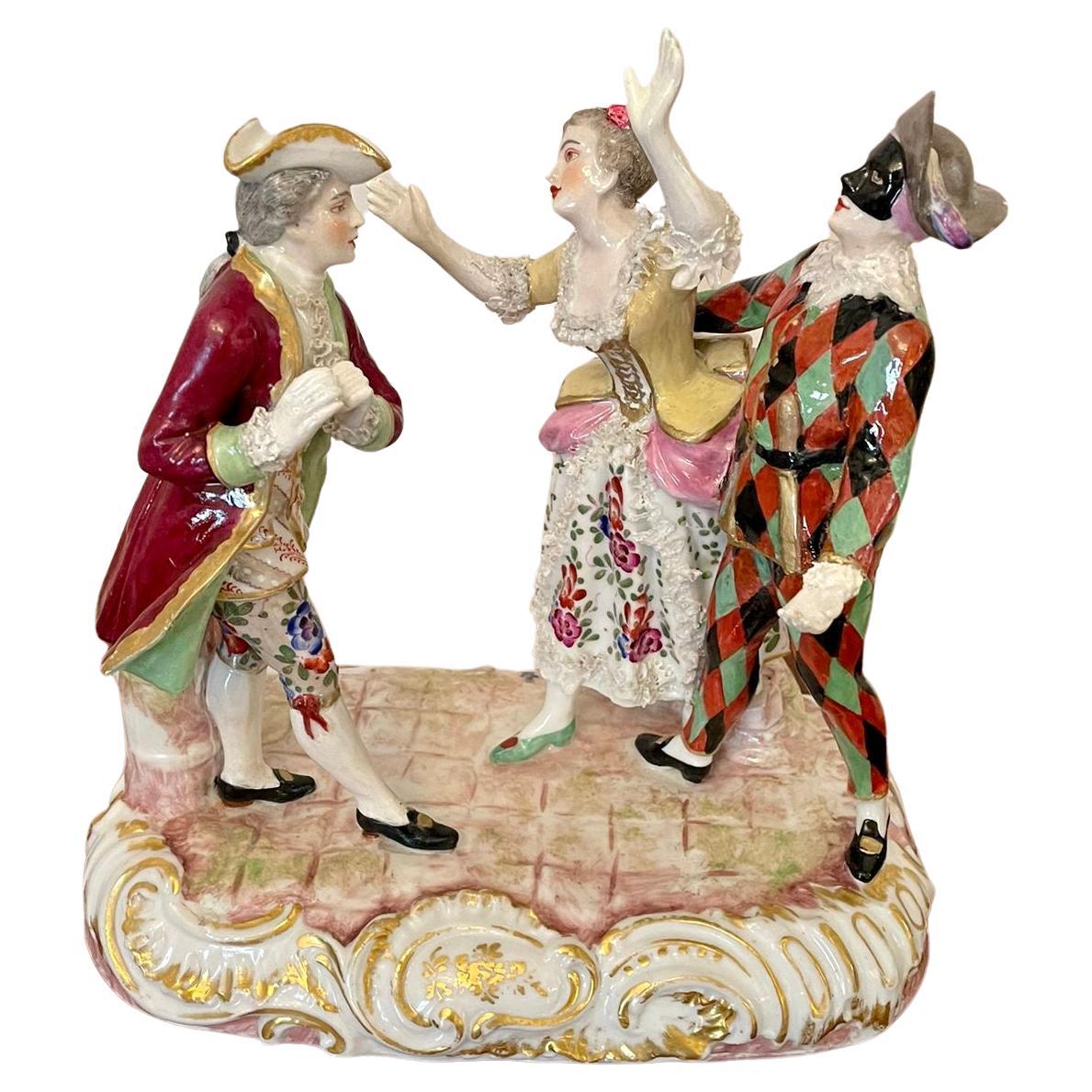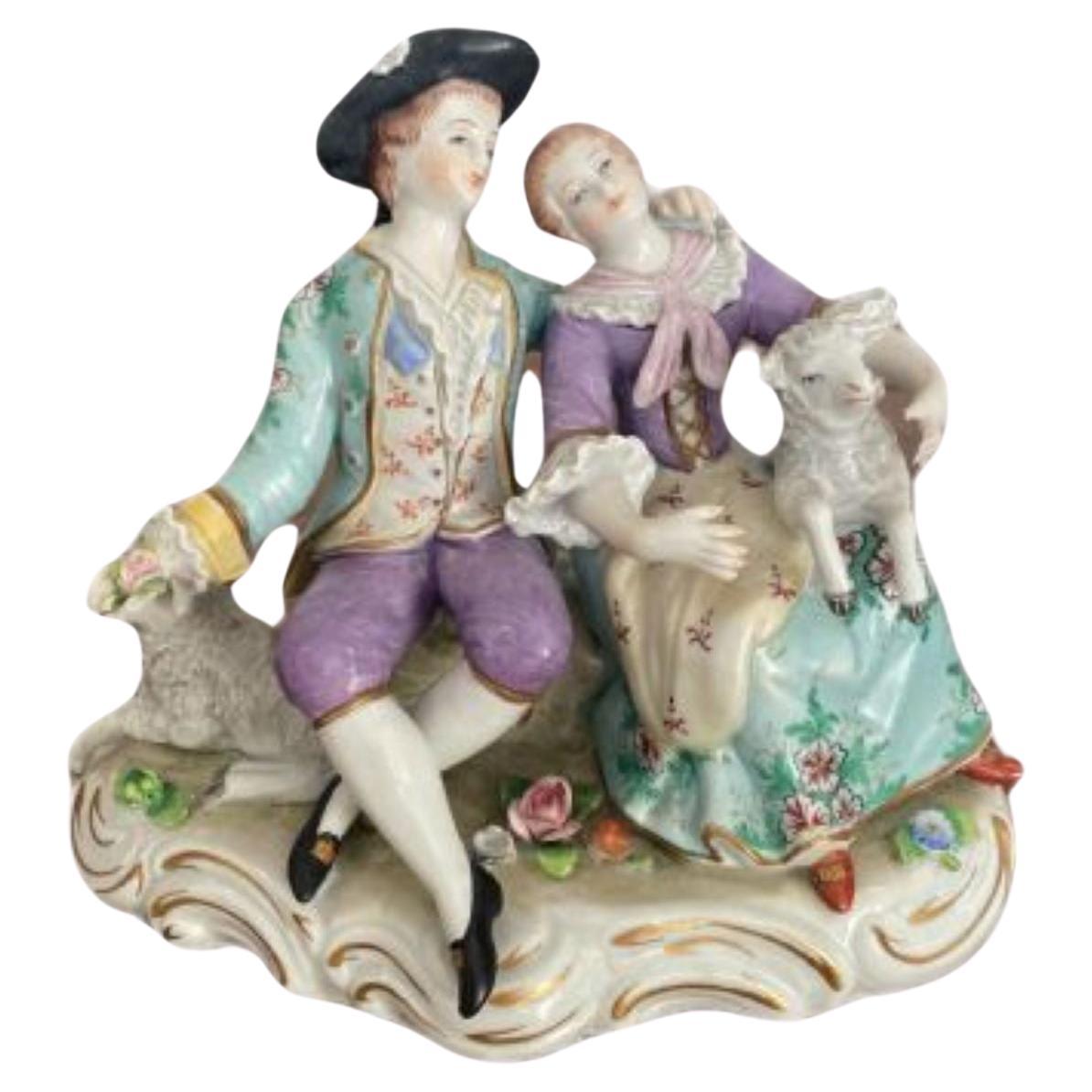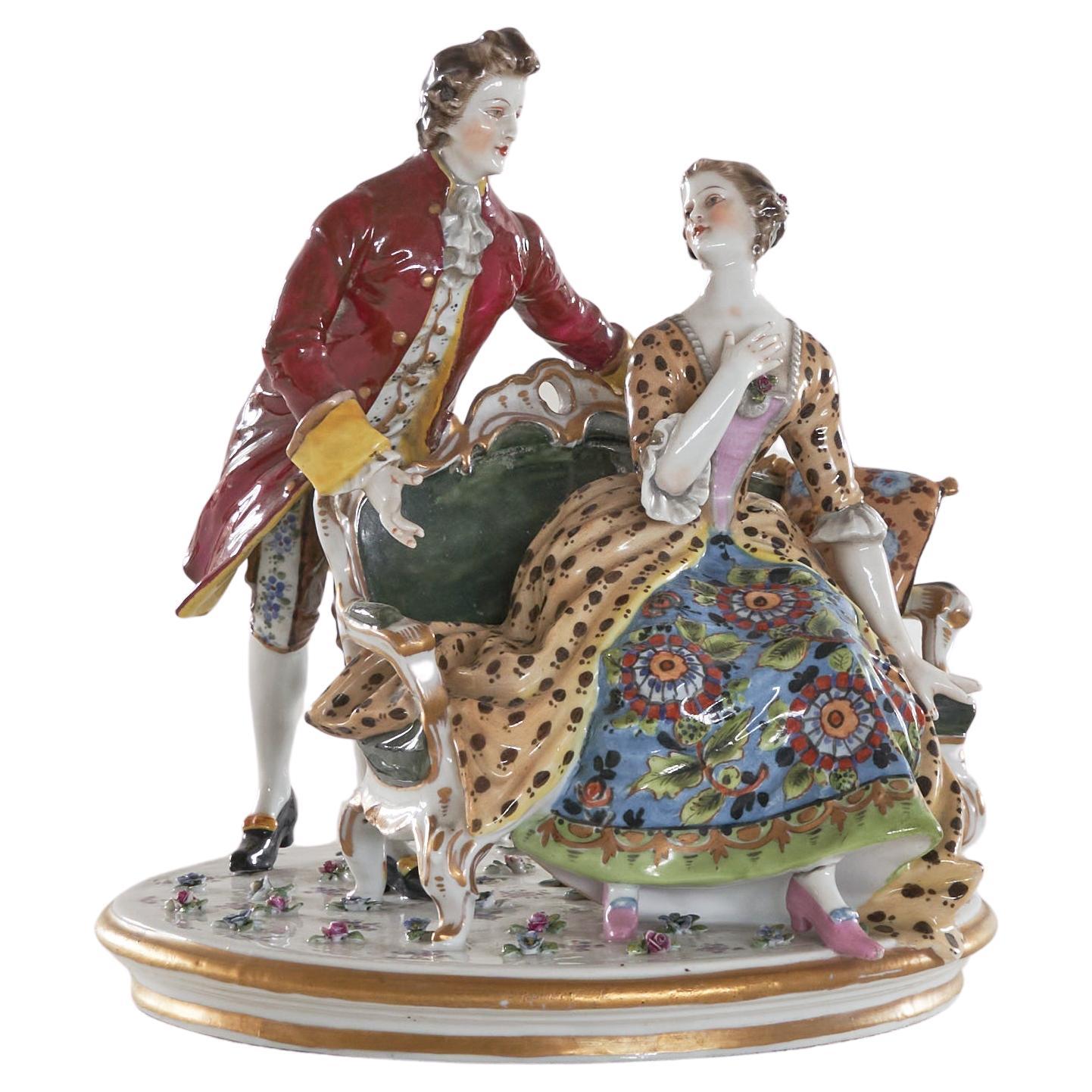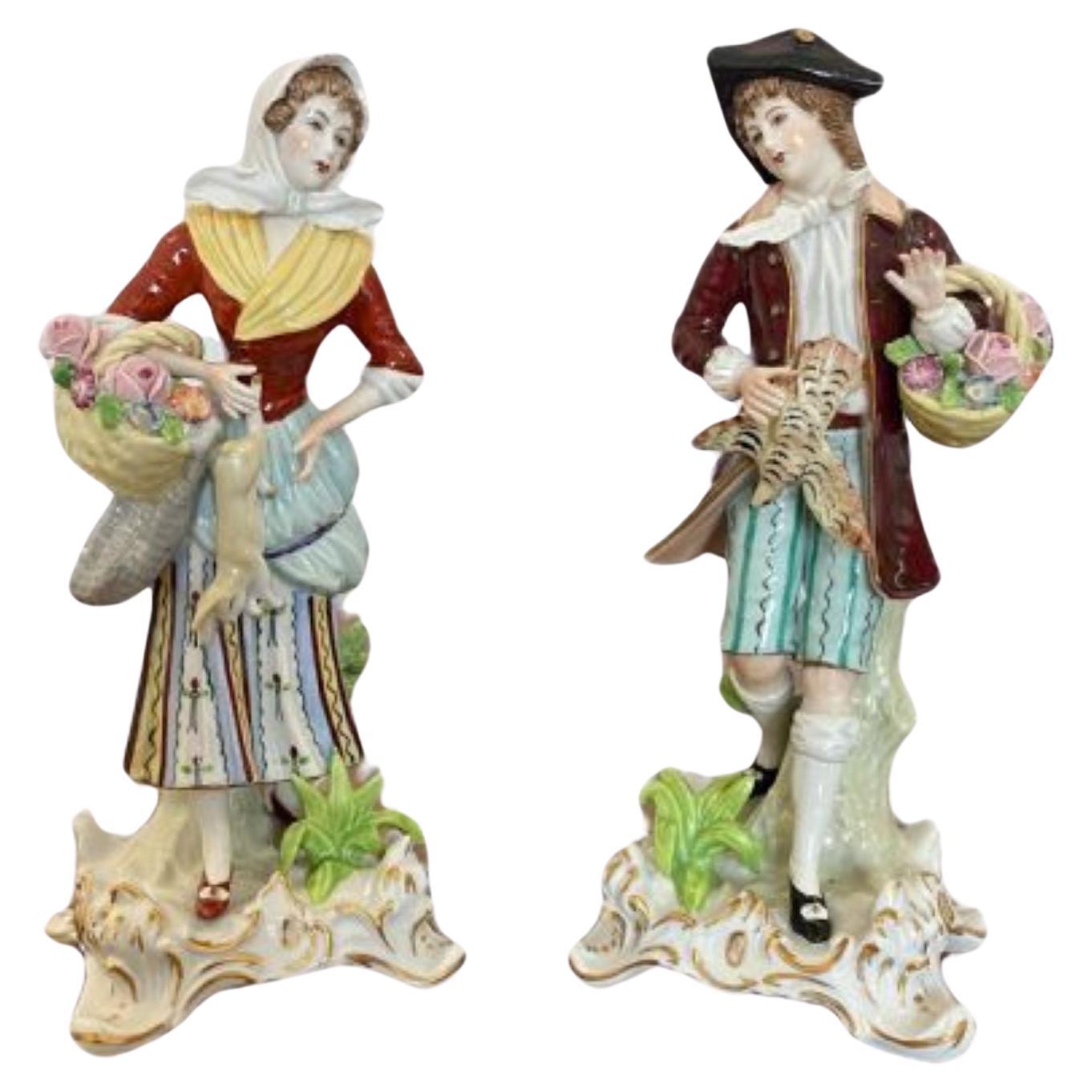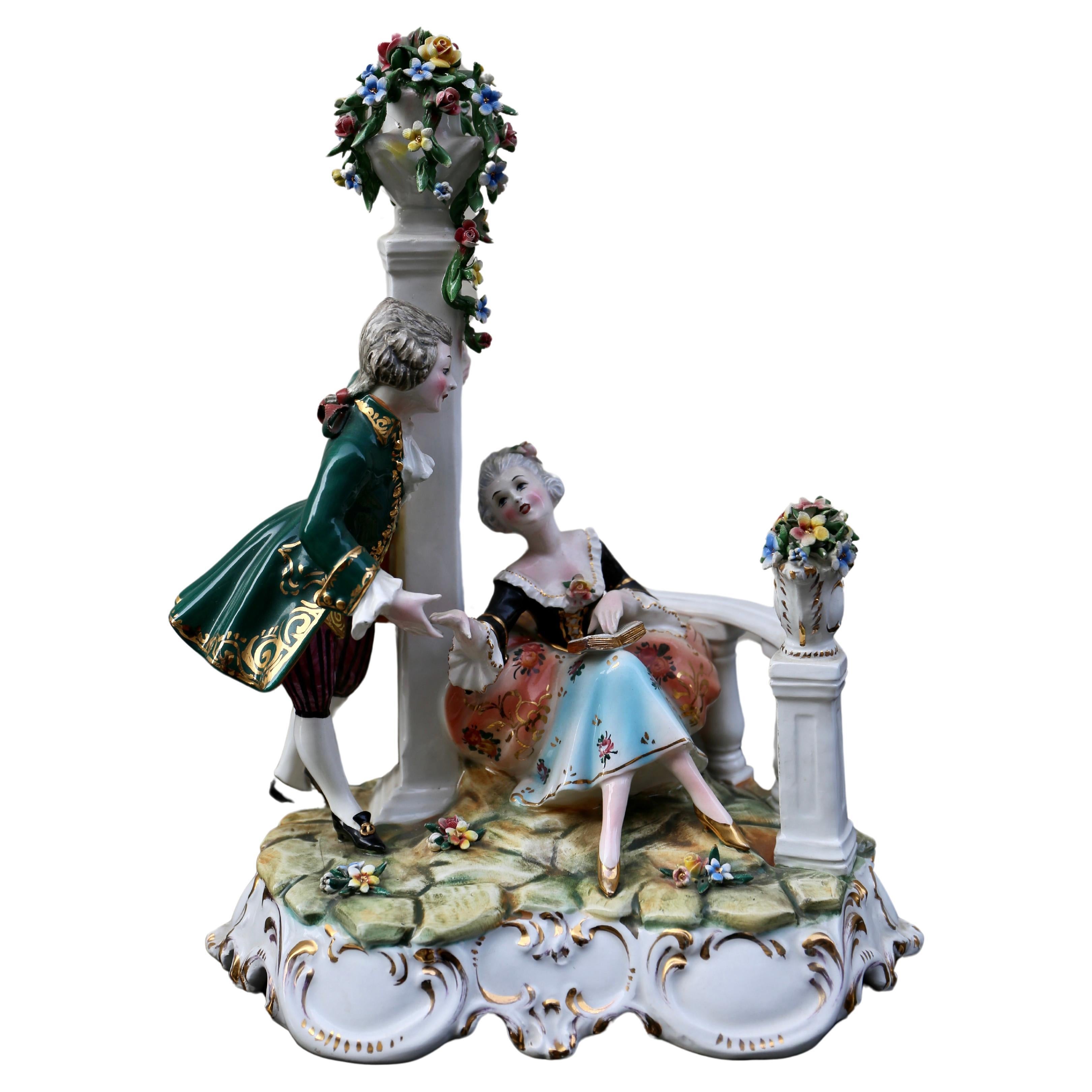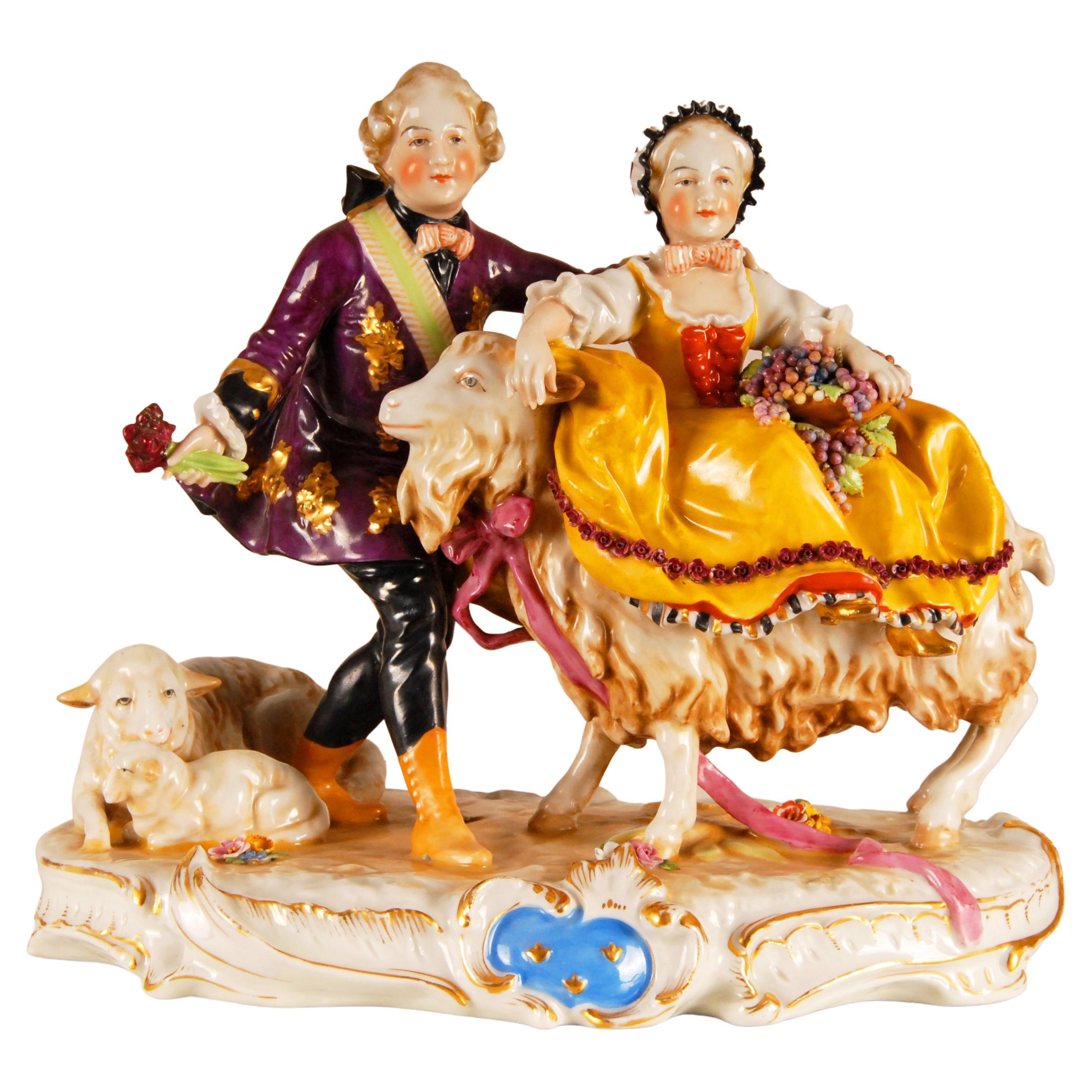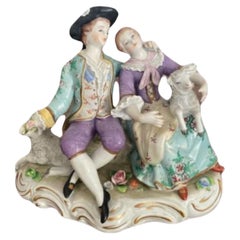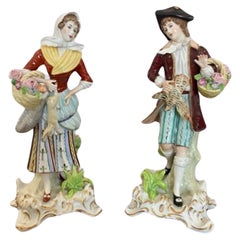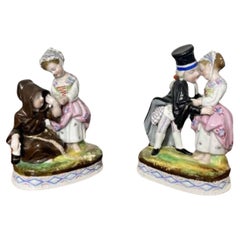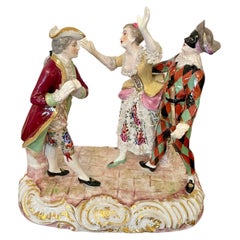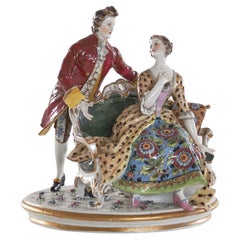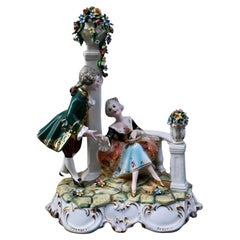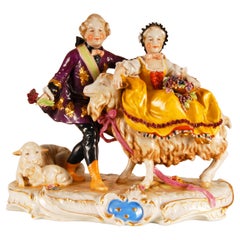Items Similar to Antique Victorian continental porcelain figural group
Want more images or videos?
Request additional images or videos from the seller
1 of 6
Antique Victorian continental porcelain figural group
$654.46
£475
€558.33
CA$905.61
A$998.42
CHF 522.34
MX$12,248.73
NOK 6,575.22
SEK 6,148.87
DKK 4,169.65
About the Item
Antique Victorian continental porcelain figural group, depicting a lady and gentlemen seated having tea, in wonderful period clothing hand painted in stunning colours.
D. 1880
- Dimensions:Height: 6.3 in (16 cm)Width: 7.49 in (19 cm)Depth: 5.52 in (14 cm)
- Style:Early Victorian (Of the Period)
- Materials and Techniques:
- Place of Origin:
- Period:
- Date of Manufacture:1880
- Condition:Wear consistent with age and use.
- Seller Location:Ipswich, GB
- Reference Number:1stDibs: LU9214241353732
About the Seller
5.0
Gold Seller
Premium sellers maintaining a 4.3+ rating and 24-hour response times
1stDibs seller since 2023
126 sales on 1stDibs
Typical response time: 4 hours
- ShippingRetrieving quote...Shipping from: Ipswich, United Kingdom
- Return Policy
Authenticity Guarantee
In the unlikely event there’s an issue with an item’s authenticity, contact us within 1 year for a full refund. DetailsMoney-Back Guarantee
If your item is not as described, is damaged in transit, or does not arrive, contact us within 7 days for a full refund. Details24-Hour Cancellation
You have a 24-hour grace period in which to reconsider your purchase, with no questions asked.Vetted Professional Sellers
Our world-class sellers must adhere to strict standards for service and quality, maintaining the integrity of our listings.Price-Match Guarantee
If you find that a seller listed the same item for a lower price elsewhere, we’ll match it.Trusted Global Delivery
Our best-in-class carrier network provides specialized shipping options worldwide, including custom delivery.More From This Seller
View AllVictorian Quality Porcelain Continental Group
Located in Ipswich, GB
Late 19th Century English Victorian antique porcelain Continental Group having two figures sitting on a shaped base with gilded scroll decoration in colourful period clothing holding...
Category
Antique Early 19th Century Victorian Porcelain
Materials
Porcelain
Pair Of Antique Continental Porcelain Figures
Located in Ipswich, GB
Pair of antique porcelain figures holding a basket of flowers in wonderful colourful period clothing in red, yellow, green and blue colours s...
Category
Antique Early 19th Century Porcelain
Materials
Porcelain
Antique porcelain continental figure
Located in Ipswich, GB
Antique porcelain continental figure having an antique porcelain continental figure of a child carrying a bag in wonderful coloured period clothing i...
Category
Early 20th Century Porcelain
Materials
Porcelain
Pair of antique Victorian continental quality porcelain figures
Located in Ipswich, GB
Pair of antique Victorian continental quality porcelain figures, having a quality pair of figures dressed in period clothing telling a story loving someone for richer or poorer, sick...
Category
Antique Early 19th Century Victorian Porcelain
Materials
Porcelain
Antique Victorian quality continental porcelain group
Located in Ipswich, GB
Antique Victorian quality continental porcelain group having two cherubs carrying a shaped dish standing on an oval shaped base in wonderful blue and white colours.
Category
Antique 19th Century Victorian Centerpieces
Materials
Porcelain
Stunning quality antique Victorian Staffordshire figure
Located in Ipswich, GB
Stunning quality antique Victorian Staffordshire figure, having a quality Staffordshire figure of a man and woman seated in traditional clothing surrounded by foliage, hand painted i...
Category
Antique Early 19th Century Early Victorian Pottery
Materials
Pottery
You May Also Like
Antique Victorian French Porcelain Figural Group by Eugene Clauss of Paris
Located in Suffolk, GB
Antique Victorian French porcelain figural group depicting in polychrome a dramatical scene. Maker Eugene Clauss of Paris.
A delightful piece in lovely original condition.
M...
Category
Antique 19th Century European Victorian Ceramics
Materials
Porcelain
Antique Hand Painted Romantic Porcelain Figurine Group in the style of Meissen
By Meissen Porcelain
Located in Tilburg, NL
Antique Hand Painted Romantic Porcelain Figurine Group in the style of Meissen.
Beautifully hand painted figurine group in porcelain. Depicti...
Category
Antique Late 19th Century European Romantic Figurative Sculptures
Materials
Porcelain
Porcelain Figurine, Italy
Located in Antwerp, BE
Beautiful porcelain figurine of a romantic love couple, the lustrous colors of verdant green, pinks and a wide range of patinas accentuating their figures and movement.
Height 10.6...
Category
Mid-20th Century Italian Victorian Figurative Sculptures
Materials
Porcelain
Antique Old Paris Porcelain Figurine Figural Group Rococo Style 19th Century
Located in Wommelgem, VAN
A very rare tall antique 19th century Old Paris figurine Vieux Paris
Depicting a couple with sheeps and a goat
Very detailed with applied roses o...
Category
Antique 19th Century Rococo Revival Figurative Sculptures
Materials
Porcelain
Early 19th Century Capodimonte Figural Group
Located in Dublin 8, IE
Early 19th century Capodimonte lively figural group of two women tending to a gentleman’s hair with playful little dog, circa 1820.
Category
Antique 1820s Irish Porcelain
Materials
Porcelain
German Thieme Porcelain Figural Group
Located in Astoria, NY
German Thieme Porcelain Figural Group, late 19th century, depicting figures on and around a wine barrel celebrating the grape harvest, with grape vine and floral encrusting on a circ...
Category
Antique Late 19th Century German Grand Tour Ceramics
Materials
Porcelain
More Ways To Browse
Herend Hungary Cachepot
Ikat Plates
Meissen Bird Insect
Meissen Dessert Plates
Meissen Girl And Boy
Meissen Lion
Meissen Swan
Meissen Winter
Minton Cup And Saucer
Napoleon Sevres Porcelain Plates
Porcelain Cameo
Rosenthal Lotus
Rosenthal Romanze
Royal Copenhagen Sugar
Used Furniture Albany
Versace By Rosenthal
Vienna Augarten
Wedgwood China
